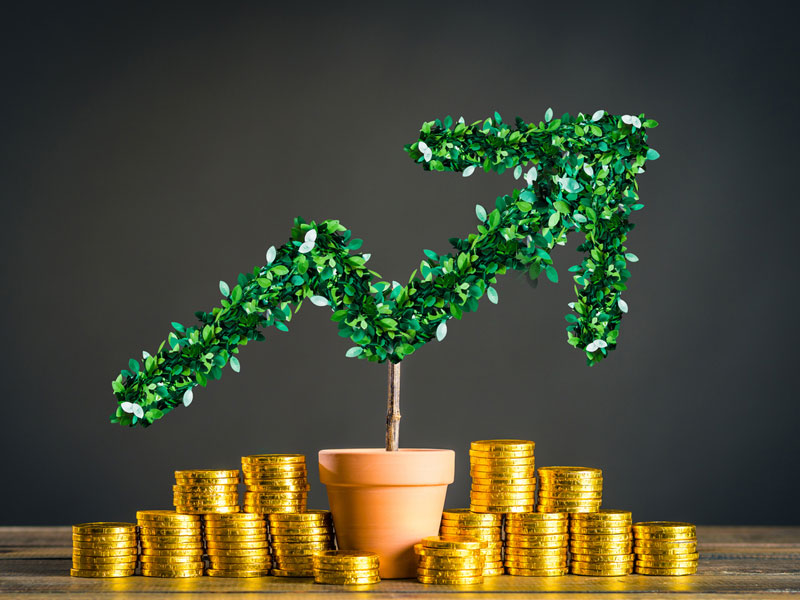
This article appears in the April 2022 issue of Investment Executive. Subscribe to the print edition, read the digital edition or read the articles online.
The benefits of sustainable bond strategies can outweigh any potential loss of opportunities. “Investors now are under even more scrutiny to ensure that they’re not lending to unstable governments or companies,” said Avi Hooper, senior portfolio manager with Toronto-based Invesco Canada Ltd.
Bond issuers that are rated highly according to ESG criteria could attract more capital flows, Hooper added, “which, in turn, one would think, could lead to better performance.”
Hooper cited Russian sovereign bonds as an example of how ESG screening can avoid losses. Before Russia invaded Ukraine on Feb. 24, Russia was deemed a creditworthy emerging-market issuer because of its natural-resources revenue and foreign currency reserves.
“From a financial credit perspective, you may have included it, but from an ESG or operational or quality factor, you would have excluded Russia,” Hooper said. ESG “turned out to be a very good variable, a good factor to add, in the investment process.”
Hooper said fixed-income portfolio managers must remain mindful of traditional credit analysis. “First and foremost, you can’t get away from the fact that the business has to be financially viable,” Hooper said. “The ESG part of it, or the operational part of that business, is not enough.”
Invesco Canada sponsors the Invesco ESG Canadian Core Plus Bond ETF, also available as a mutual fund, and the Invesco ESG Global Bond ETF. Those funds are among more than 40 socially responsible fixed-income ETFs and mutual funds in Canada. About 20 fund providers offer mandates ranging from broadly defined ESG to a narrow focus on low carbon emissions.
Although funds such as the Desjardins SocieTerra Canadian Bond Fund and the RBC Vision Bond Fund have longer track records, most mutual funds and almost all ETFs with ESG-related fixed-income strategies are less than three years old. That proliferation is in response to the heightened awareness and growing investor demand for values-oriented investing.
The fixed-income strategies fall into two main types: those that track indexes and those that are actively managed. One of the most extensive lineups is that of BMO Investments Inc.’s ETFs, which encompass Canadian corporate bonds, U.S. corporates, global bonds and high-yield bonds.
BMO’s passively managed ESG ETFs in fixed-income categories rely on MSCI ratings that specifically exclude certain industries, including alcohol, tobacco, adult entertainment, gambling, weapons and nuclear power. Also ineligible are companies the index provider deems to be involved in “severe business controversies.”
BMO’s latest ESG offering is the actively managed BMO Sustainable Global Multi-Sector Bond Fund, available in both ETF and mutual fund versions. Investors approved a change in the fund’s mandate, effective in November 2021, to add sustainability criteria to the fund, which launched in 2018 without an ESG mandate.
With the notable exception of being open to nuclear power, the global fund’s exclusions are similar to those of BMO’s ESG index funds, said Mark Raes, head of product with BMO Global Asset Management Canada. Otherwise, the fund’s team of portfolio managers employ a ranking system to select socially responsible companies while avoiding ESG laggards.
“When we think about ESG screening and measurement and filtering, there is an element of quality to that,” Raes said. “And there is an element of risk mitigation to it. That’s something that obviously works very well, hand-in-hand with active management.”
BMO is the only firm to offer ESG ETFs in the high-yield category — one currency-hedged and one unhedged. There’s more opportunity for ESG to make a positive impact in lower-quality bonds, Raes said: “You’re dealing perhaps with companies that are emerging or perhaps have had governance concerns in the past.”
Invesco’s domestic and global ESG strategies are both actively managed, with screening consisting of specific industry exclusions and a proprietary scoring system that rates other issuers.
The Invesco organization’s fixed-income analysts in North America and abroad are responsible for evaluating both financial and ESG criteria. “We feel to be really genuine about ESG fixed-income investing, it’s got to be done by credit specialists,” Hooper said. “These are individuals or analysts who are closest to not only the sector but also the respective issuers.”
In the Canadian bond market, where domestic fund managers have far less choice than their global counterparts, ESG mandates will constrain securities selection.
But because only 26% of the Canadian investment-grade universe consists of corporates, the exclusions aren’t onerous. At Invesco, Hooper said, the specific exclusions — primarily in the energy sector — amount to only about one-tenth of the corporate universe, or less than 1% of the overall Canadian market. In addition, a domestic fund can invest up to 30% of its assets outside Canada.
As for the global arena, does ESG investing mean sacrificing fixed-income returns?
“That’s the No. 1 question when it comes to responsible investing,” said Raes. “And thankfully the answer is no. The investable universe is still very broad.” And, second: “People are recognizing the risk element that gets mitigated with an ESG overlay or screen.”